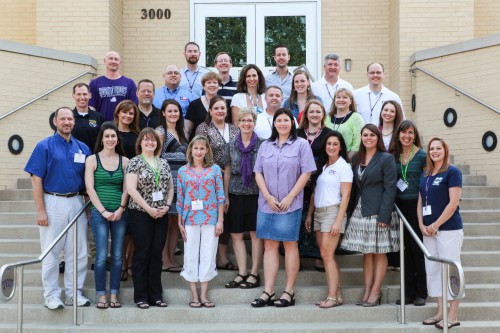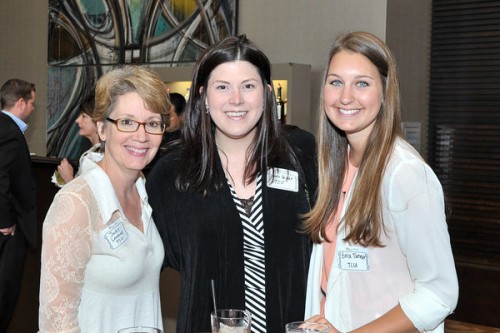DFW Interactive Marketing Association Awards Banquet
Certified Public Communicator Program Launches at TCU
After a year of hard work, lots of meetings and planning, I am proud to announce the launch of the Certified Public Communicator Program at TCU!
My colleague,Dr. Jacque Lambiase, is the master mind behind this innovative new program that offers public information officers a place to learn and hone their skills in strategic communication. The program is the first of its kind to be offered to communication professionals who work in city, county and public sector agencies. The CPC program is a partnership of TCU’s Schieffer School of Journalism, Extended Education, and the Texas Association of Municipal Information Officers.
The Certified Public Communicator Program at TCU is a post-baccalaureate, graduate-level residential program for two summers (one week each in 2013 and 2014), plus a two-day winter session with strategic communication professors from TCU’s Schieffer School of Journalism.
Professional communicators working for city, county, and public-sector agencies create three-year comprehensive communication plans for their organizations during the program.
I am excited to be a member of the core team launching this program in July 2013. If you are interested in the program or want to learn more, visit our website at www.certifiedpubliccommunicator.com.
Fall 2012 Activity
Classes are finally wrapped up, grades are in, and it is time to take a few weeks to relax and recuperate before things kick off again in mid-January. It was a very busy fall semester but lots of things were accomplished – here are the highlights:
- Bright, Laura F. (2013). Taming the Information Beast: Content Customization and Its Impact on Media Enjoyment for Online Consumers. American Academy of Advertising Annual Conference, Albuquerque, New Mexico, April 4 – 7.
- Bright, Laura F., and Glenn Griffin (2013). Finding Synergy: How Creative and Media Can (and Should) Work Together. American Academy of Advertising Annual Conference, Albuquerque, New Mexico, April 4 – 7.
- Cunningham, Nicole, and Laura F. Bright (2012 – in press). The Tweet is in Your Court: Measuring the Effectiveness of Athlete Endorsements in Social Media. International Journal of Integrated Marketing Communications.
- Lambiase, Jacqueline, and Laura F. Bright (2012). Beyond the Basics: How Social Media Can Change Your City for the Better. 100th Texas Municipal League Annual Conference, Grapevine, Texas, November 14th.
- Logan, Kelty, Laura F. Bright, and Harsha Gangadharbatla (2012). Facebook Versus Television: Advertising Value Perceptions Among Females. Journal of Research in Interactive Marketing, Vol. 6(3), pp. 164 – 179.
- Ranked in “Top Marketing Professors on Twitter” by Social Media Marketing Magazine
- Ranked in “Top 100 Web Savvy Professors” by Best Online Universities
- Successful launch of the Certified Public Communicator Program with Dr. Jacqueline Lambiase at TCU Extended Education
More to come in the spring … until then, have a wonderful holiday and Happy New Year!
Blog Feeds to Follow
As we all know, the flow of information we deal with each day can easily become very overwhelming. Many years ago I adopted Google Reader to help manage the blogs and websites I enjoy following – it allows me to organize my feeds by topic area while always being up to date on the latest content. In this regard, it has been a huge timesaver as it aggregates information into a central location – it is my own personalized daily newspaper!
Here are a few blogs / online media outlets that I enjoy following. This is not a definitive list by any stretch – I am always adding new sites, trying them out and then amending the list when I need to:
Blog / Online Media List
—————————
Adverblog
Ad Age Digital
Advertising Lab
A List Apart
Behavioral Insider
Boxes and Arrows
Conversion Rate Marketing Blog
Cool Hunting
Daring Fireball
Derek Powazek
Fast Company
Lifehacker
Metrics Insider
NYT Media and Advertising
Presentation Zen
Research Brief
Signal vs. Noise
TED: Ideas Worth Spreading
And a few just for fun …
—————————
If we don’t, Remember me
Impossible Cool
Indexed
Nerd Boyfriend
Style Rookie
THX THX THX
XKCD
Hope you find something great to add to your daily feed!

